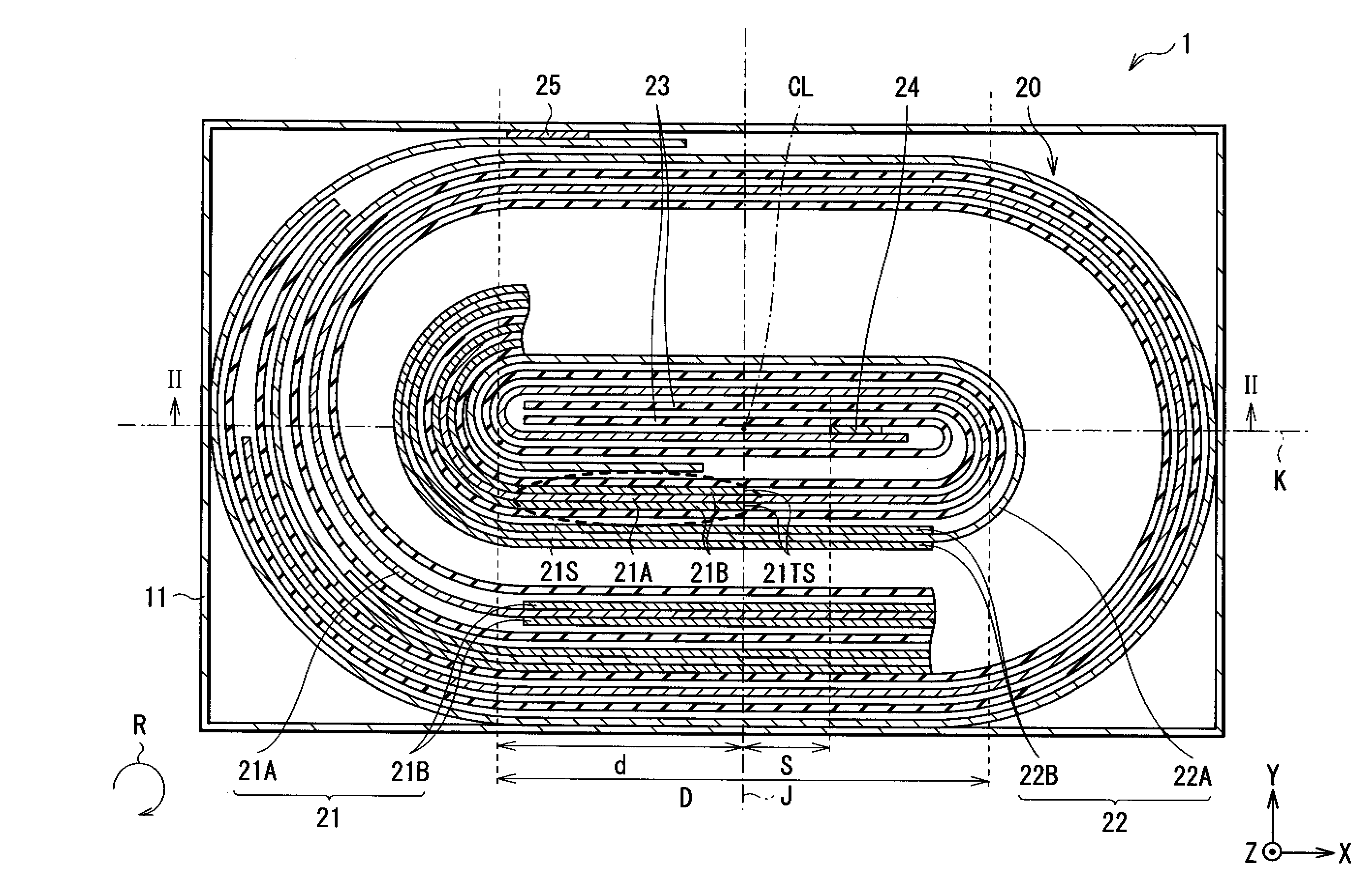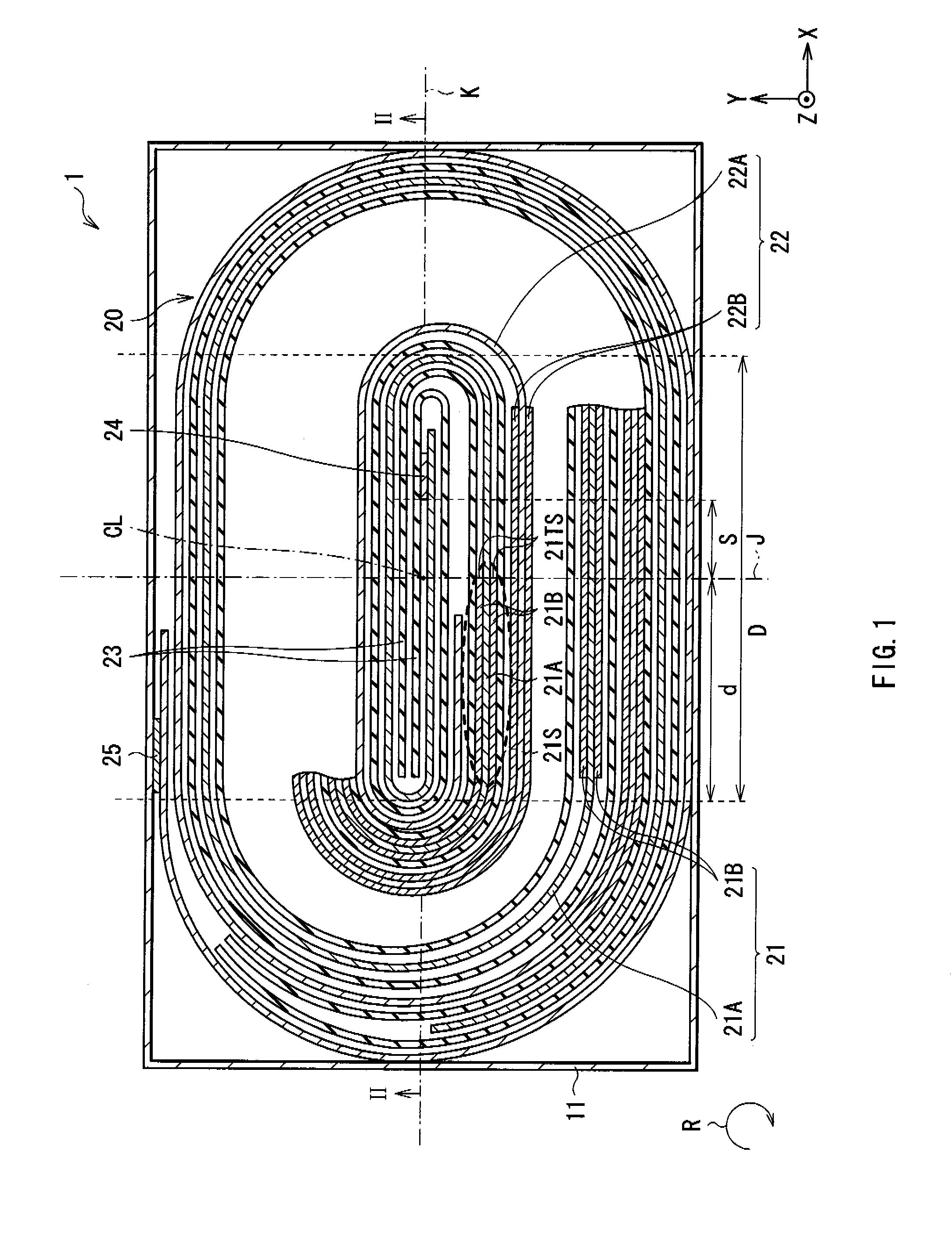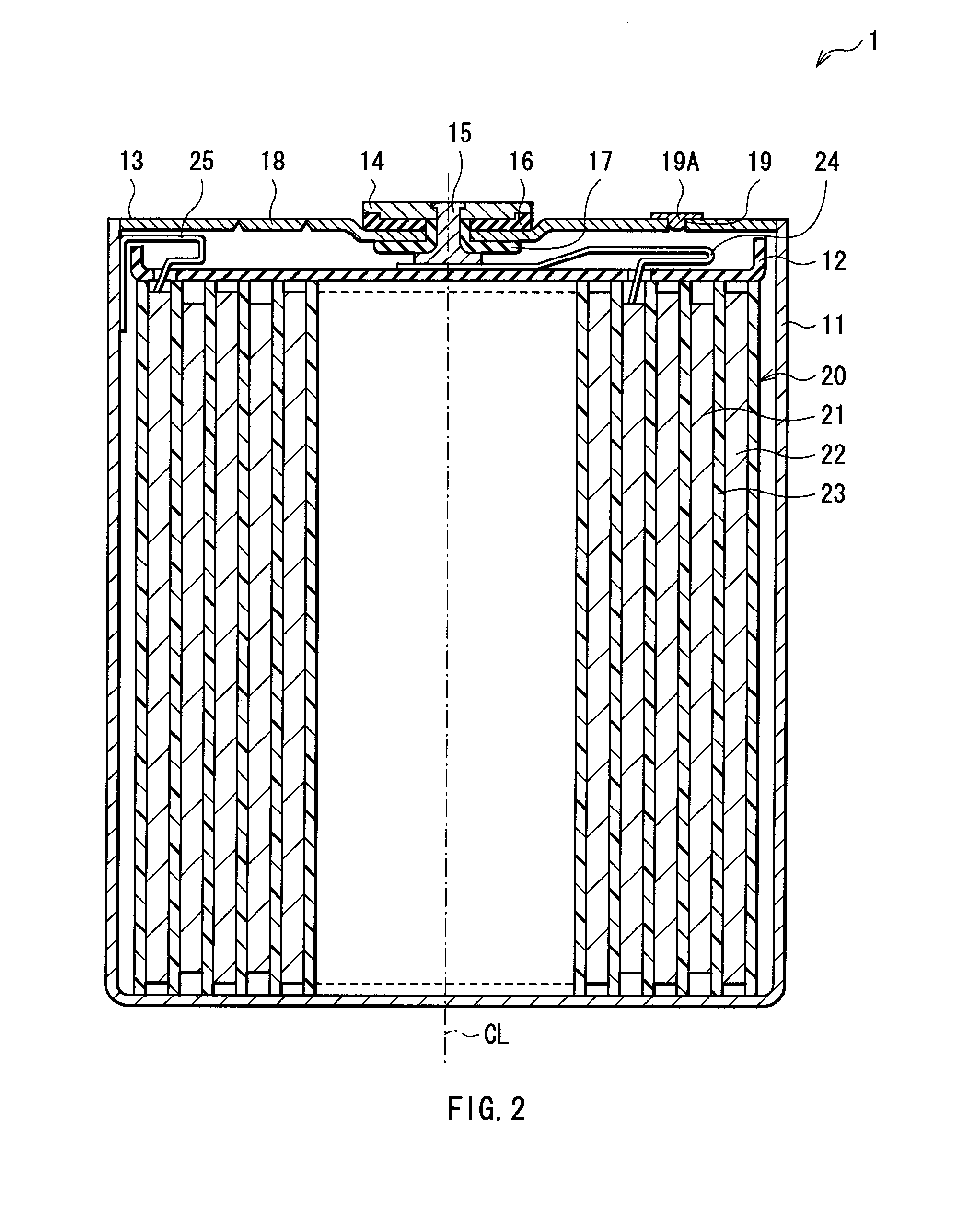Secondary battery
a secondary battery and battery technology, applied in the field of secondary batteries, can solve the problems of insufficient utilization of the merits of high-capacity anodes using alloy materials, insufficient suppression of expansion and shrinkage of anodes in charge and discharge, and insufficient utilization of cycle characteristics of high-capacity anodes, etc., to achieve sufficient capacity, charge and discharge cycle characteristics can be improved, and the load characteristics and discharge cycle characteristics can be deteriorated due to lithium precipitation. ,
- Summary
- Abstract
- Description
- Claims
- Application Information
AI Technical Summary
Benefits of technology
Problems solved by technology
Method used
Image
Examples
first embodiment
[0030]FIG. 1 and FIG. 2 show a cross sectional structure of a secondary battery 1 as a first embodiment of the invention. The secondary battery 1 is a so-called square secondary battery, and contains a planular spirally wound electrode body 20 inside a battery can 11 in the shape of an approximately hollow rectangular parallelepiped. The spirally wound electrode body 20 is a lamination film including a plurality of layers as described later, and is obtained by spirally winding the lamination film centering on a spirally winding axis CL. FIG. 1 shows a structure of a cross section perpendicular to the spirally winding axis CL. FIG. 2 shows a structure of a cross section cut taken along the long axis direction including the spirally winding axis CL. That is, FIG. 2 is a cross section in the arrow direction taken along line II-II shown in FIG. 1.
[0031]The battery can 11 is made of, for example, iron (Fe) plated by nickel (Ni). The battery can 11 also has a function as an anode terminal...
second embodiment
[0064]Subsequently, a description will be given of a secondary battery 2 as a second embodiment of the invention with reference to FIG. 5. FIG. 5 shows a cross sectional structure of the secondary battery 2, and corresponds to FIG. 1 showing the secondary battery 1 in the foregoing first embodiment. The secondary battery 2 has a structure similar to that of the secondary battery 1, except that a spirally wound electrode body 30 is included instead of the spirally wound electrode body 20. Therefore, a description will be given in such a manner that elements substantially identical with those of the secondary battery 1 are affixed with the same symbol, and the description thereof will be omitted as appropriate.
[0065]As shown in FIG. 5, the spirally wound electrode body 30 is formed to match with the shape of the battery can 11 in the cross section perpendicular to the spirally winding axis CL, and is planular shape having the long axis K (direction X) and the short axis J (direction Y...
third embodiment
[0072]Subsequently, a description will be given of a secondary battery 3 as a third embodiment of the invention with reference to FIG. 6. FIG. 6 shows a cross sectional structure of the secondary battery 3. The secondary battery 3 has a structure similar to that of the secondary battery 1 of the first embodiment, except that a spirally wound electrode body 40 is included instead of the spirally wound electrode body 20.
[0073]The spirally wound electrode body 40 has the both characteristics of the spirally wound electrode body 20 and the spirally wound electrode body 30. More specifically, in the spirally wound electrode body 40, the end face 21TS and the end face 21TE of the cathode active material layer 21B are located on one side of two regions divided by the long axis K. Further, the flat portion 21S and the flat portion 21E do not overlap with each other in the direction of the short axis J, and extend respectively from the end face 21TS and the end face 21TE to depart from each ...
PUM
 Login to View More
Login to View More Abstract
Description
Claims
Application Information
 Login to View More
Login to View More - R&D
- Intellectual Property
- Life Sciences
- Materials
- Tech Scout
- Unparalleled Data Quality
- Higher Quality Content
- 60% Fewer Hallucinations
Browse by: Latest US Patents, China's latest patents, Technical Efficacy Thesaurus, Application Domain, Technology Topic, Popular Technical Reports.
© 2025 PatSnap. All rights reserved.Legal|Privacy policy|Modern Slavery Act Transparency Statement|Sitemap|About US| Contact US: help@patsnap.com



